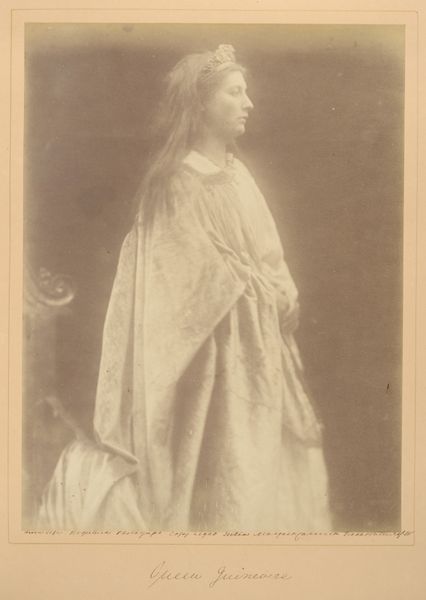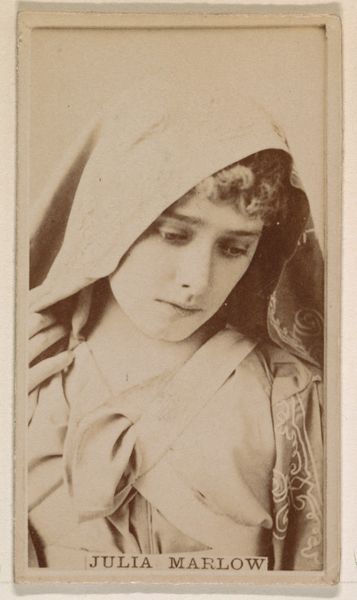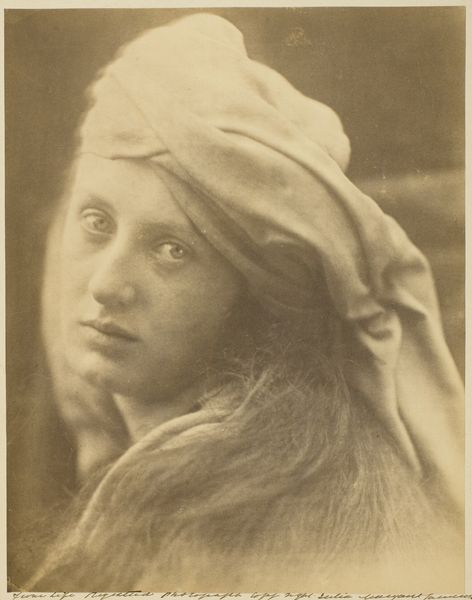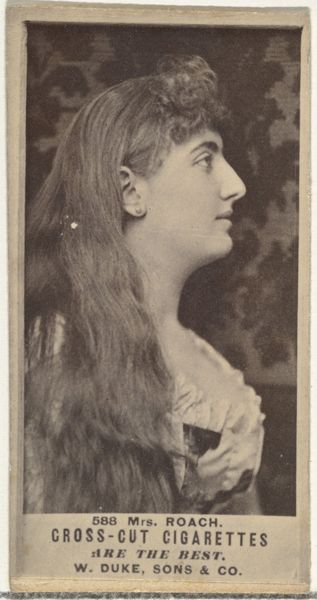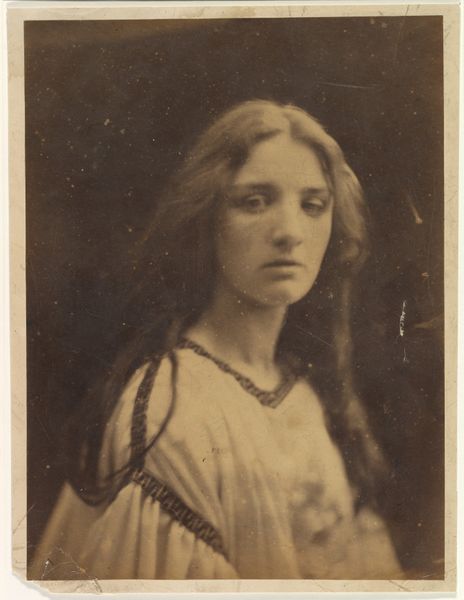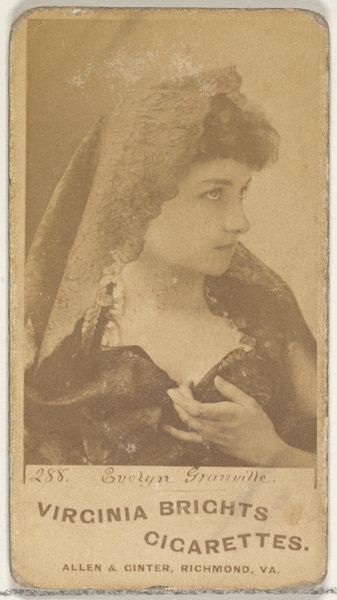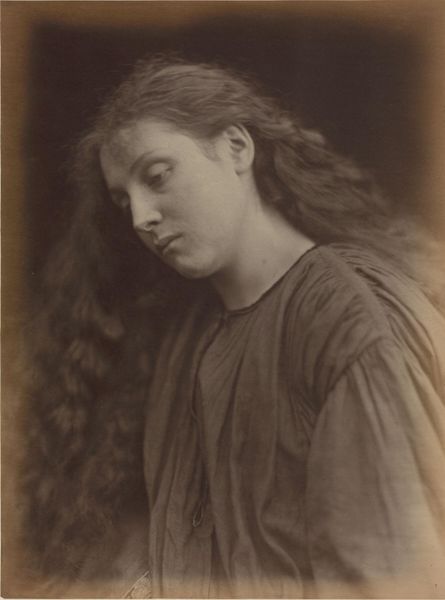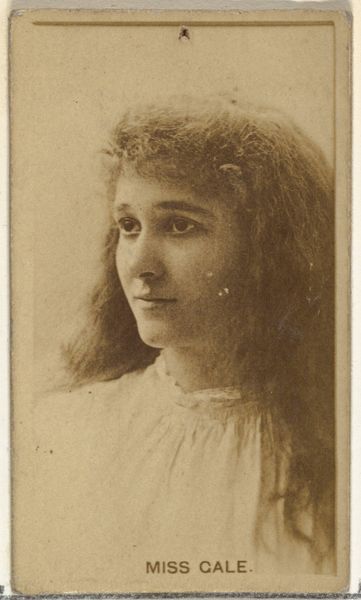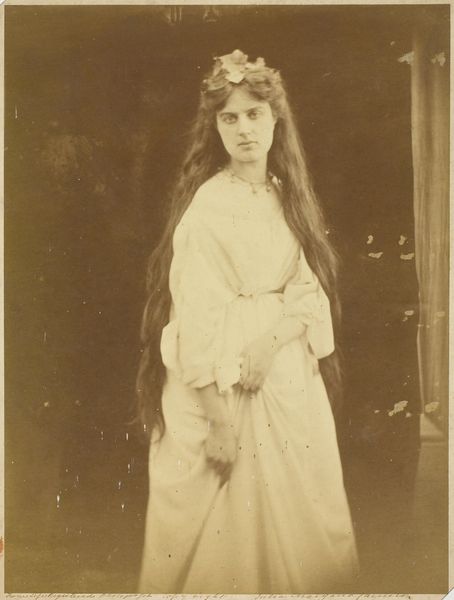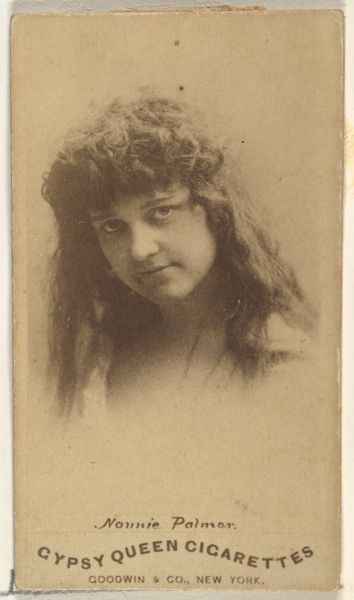
Dimensions: 35.5 × 25.8 cm (image/paper); 44.3 × 35.6 cm (mount)
Copyright: Public Domain
Curator: Julia Margaret Cameron's 1869 photograph, "The Angel at the Sepulchre," captures a dreamlike interpretation of a biblical scene. This gelatin silver print now resides here at The Art Institute of Chicago. Editor: My first impression is one of soft focus and gentle melancholy. The limited tonal range adds a mystical quality, almost like a fading memory. Curator: Indeed. Cameron, a key figure in the Pre-Raphaelite movement, consciously rejected sharp focus, aiming instead for emotional resonance and symbolic depth. Her works reflect an interest in staging historical, allegorical, and literary scenes. She employed photography not as objective recording, but as subjective artistic expression. Editor: The composition leads the eye directly to the subject’s profile, enhanced by the soft veil framing her face. This directs our view through the classical symbolism embedded within. The adjacent lilies introduce narrative through associated representations. I think that their fragile beauty intensifies the photograph's themes of loss and hope. Curator: The lilies would certainly signify purity and resurrection, key to the narrative of the angel at the sepulchre. Note too that Cameron was embedded in a specific Victorian context; she participated actively within artistic circles shaped by moralistic, spiritual, and aesthetic movements. Her approach often caused controversy. Some celebrated her artistic vision, while others criticized her "out-of-focus" technique and unconventional subjects. Editor: It is compelling how the blurred effect emphasizes texture rather than strict realism. Consider, for example, the intricate interplay between light and shadow on her veil and flowing hair, which serves to transform mere representation into an evocation of feeling. Curator: Yes, and her studio on the Isle of Wight became a gathering place for prominent literary figures and artists who sat for her, turning her practice into a socially charged artistic enterprise. Photography was not merely personal. The dissemination of images allowed broader social access. This further establishes the power of images to construct narratives and reinforce ideologies. Editor: In conclusion, there’s a raw quality about Cameron’s work—her experimental processing is part of its allure. This pushes the boundary between medium and message, realism and the otherworldly. Curator: Agreed. Her legacy reminds us that photographic truth is always subjective. By imbuing photography with human touch, Cameron elevated the art form’s possibilities.
Comments
No comments
Be the first to comment and join the conversation on the ultimate creative platform.
